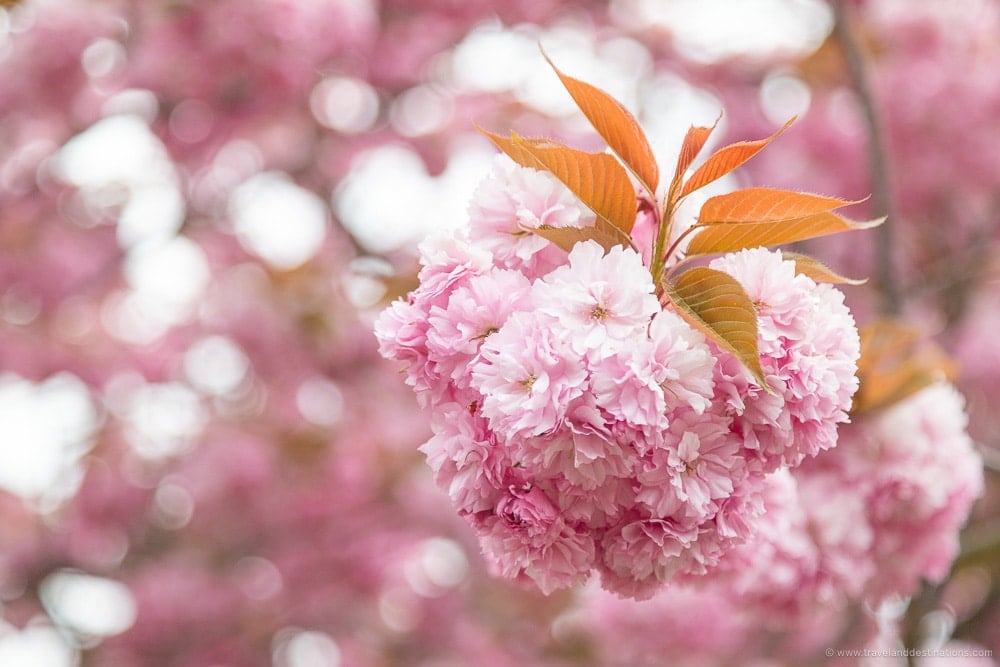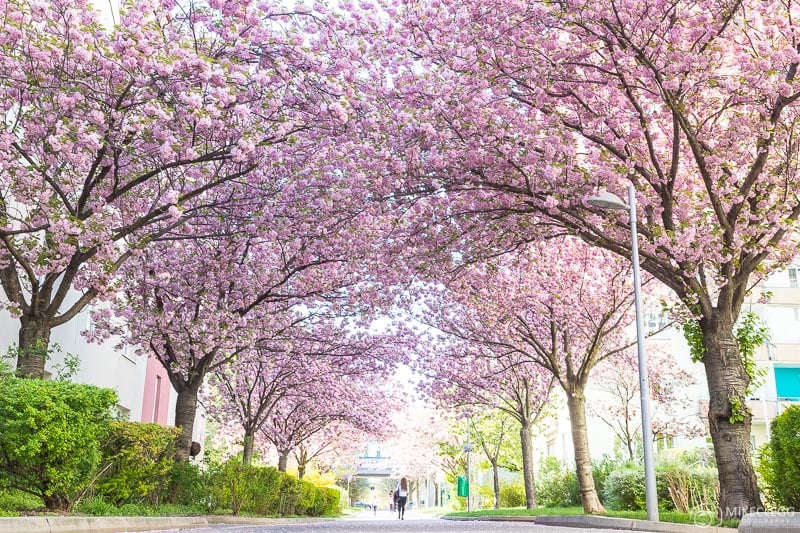Spring is a magical time of year for photographers. With nature coming back to life, the world becomes a vibrant canvas filled with endless opportunities for stunning photographs. From capturing the beauty of blossoming flowers and trees to photographing wildlife in their natural habitats, spring photography offers plenty of creative possibilities. Below I will share tips and techniques to help you make the most out of your spring photography adventures and to capture even better pictures.
Finding the right locations for spring photography
One of the keys to successful spring photography is finding the right locations. Look for areas that are known for their blooming flowers, such as public gardens, parks, and botanical gardens, and even keep an eye out for streets which have trees that bloom with wonderful colours in the springtime. Research local events or festivals dedicated to spring blooms, such as cherry blossom festivals (Japan) or the famous tulips of Keukenhof and Noordwijkerhout (Netherlands), as these can provide you with incredible opportunities for capturing the beauty of nature.
Don’t limit yourself to just flowers and blossoms. Spring is also a great time to photograph wildlife as they become more active after the winter months. Explore nature reserves, wetlands, and woodland areas where you are likely to encounter birds, butterflies, and other animals in their natural habitats.
Tips for spring photography
Here are some tips to help with your spring photographs:
1. Capture the beauty of flowers and blossoms alongside attractions and landmarks
When travelling and exploring use flowers and blooms to add a beautiful element to different places. This can be particularly cool to do when taking pictures of attractions. Experiment with different angles and perspectives, such as getting down low to capture the flowers from their level or shooting from above to showcase their patterns and shapes. You can also use flowers to help frame your shot such as seen below.

2. Take close-up photographs of flowers and blossoms
Closeup/macro photography allows you to capture the intricate details of flowers, revealing their hidden beauty. Get close to your subject and potentially even use a macro lens or extension tubes to achieve a magnified view. Pay attention to the composition and focus on specific elements, such as dewdrops on petals or the intricate patterns of stamens. This might also be a nice opportunity to capture insects such as butterflies on the flowers. Another technique and spring photography tip is to use a wide aperture so as to isolate certain flowers whilst blurring out the background.

3. Capture images of wildlife in the spring
When photographing wildlife, aim to capture their natural behaviour and interactions. Planning and patience is key as animals may be more active during certain times of day (such as early morning). Use a telephoto lens to get close-up shots while maintaining a safe distance to avoid disturbing the animals.
4. Take pictures of vibrant canopies
Spring is the time when trees and plants come alive with lush greenery. Look for canopies formed by branches and leaves, and use them as frames or leading lines to draw the viewer’s eye into the photograph. Experiment with different exposures to capture the details and textures of the foliage.

5. Get low and include flower beds and tulips
To add depth and interest to your flower photographs, position yourself at a lower angle and include flower beds or tulip fields in the foreground. This technique creates a sense of scale and allows you to showcase the vastness of the blooming landscape.

6. Keep an eye and ear out for cherry blossoms
Cherry blossoms are one of the most iconic symbols of spring. Keep track of their blooming season in your area and plan your photography outings accordingly. These delicate flowers provide endless opportunities for capturing ethereal and dreamy images.
If you want to travel during the spring and witness some of the most magical cherry blossoms in the world then put Japan high on your list. You can see pictures and read more on the Japan tourism board website.

7. Head out for sunrise and sunsets – especially after a spring shower
After a spring shower, the sky often clears up, creating dramatic and colourful sunrises or sunsets. These moments can be magical for photography, so be prepared to wake up early or stay out late to capture these breathtaking scenes. Look for reflections in puddles or bodies of water to add another layer of beauty to your images. As well as this you can use the colours of sunsets to add even more to a Spring image.

8. Capture pretty flowers down local streets
One thing I often do for the Spring is to keep note of different streets that have pretty trees that I know bloom every year. I then visit multiple times to try and capture the colours and blooms when they are at their peak.


Lighting techniques for spring photography
Lighting can play a crucial role in photography, and spring offers a unique quality of light that can enhance your images. A good time to take photographs is during the golden hours when you can enjoy soft, warm light. The golden hour occurs shortly after sunrise and before sunset and these times of day provide a beautiful, gentle glow that can add a magical touch to your spring photographs.
When photographing flowers and blossoms, pay attention to how the light falls on them. Backlighting can create a stunning effect, highlighting the delicate petals and adding a sense of depth and beauty to your images. Experiment with different angles and positions to find the best lighting conditions that complement your subject.
Editing and post-processing tips for your spring photography
After capturing your spring photographs, the editing and post-processing stage is where you can bring your images to life. Here are my tips to enhance your spring photographs:
- Enhance contrast and clarity: Increase the contrast and clarity slightly to add depth and definition to your images. Be careful not to overdo it, as excessive adjustments can result in an unnatural appearance.
- Add some vibrancy or saturation to make your colours pop: Spring is all about vibrant colours, so don’t be afraid to enhance them in your post-processing. However, be mindful not to overdo it, as it can make your images look unnatural. Use editing software to adjust the vibrancy or saturation subtly, bringing out the vividness of the spring hues. I would suggest starting with vibrancy and then add saturation afterwards if necessary.
- Fine-tune exposure: Adjust the exposure to achieve the desired brightness in your photographs. Pay attention to the highlights and shadows, ensuring that no details are lost in the process. I would suggest testing the look of your images by reducing highlights and increasing shadows to see if that improves the overall balance.
- Crop and straighten: Use the cropping tool to remove any distractions or unwanted elements from your images. Straighten horizons or adjust the angle if necessary to create a visually pleasing composition. Sometimes it helps to shoot wide and then crop afterwards as well as this will give you a bit of wiggle room.
- Sharpen selectively: Apply selective sharpening to bring out the details in specific areas of your images. Avoid applying sharpening globally, as it can lead to noise or artefacts.
Summary
Spring photography offers fantastic opportunities to capture the beauty of nature in its most vibrant and lively state. By exploring the right locations, using lighting techniques, and incorporating effective composition strategies, you can create stunning spring photographs that evoke the essence of this magical season. Remember to experiment, be patient, and embrace the natural beauty that surrounds you. Have fun with your spring photography!
Noticed a mistake? Let us know.






